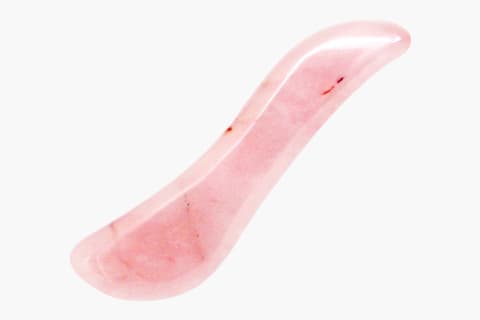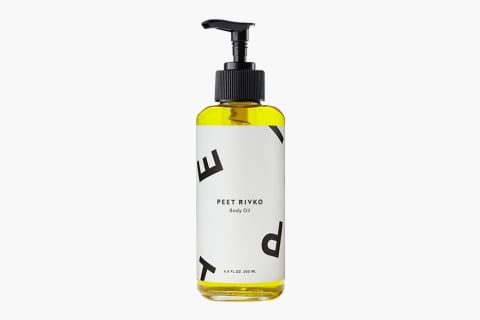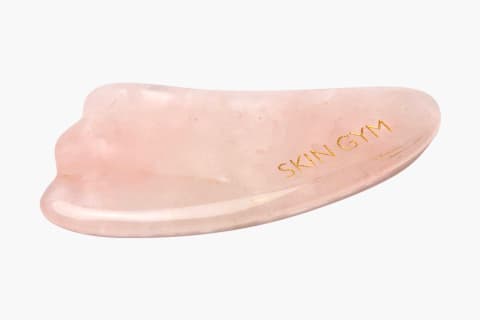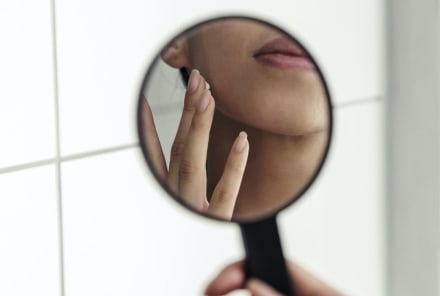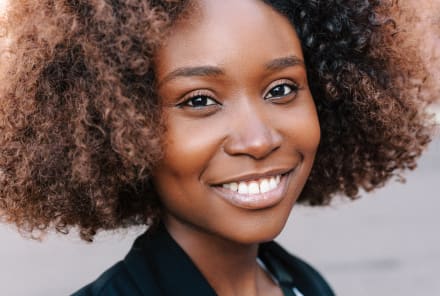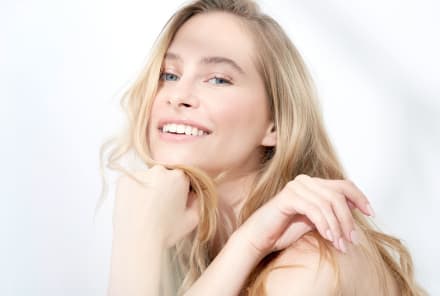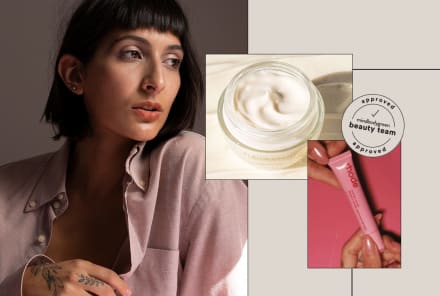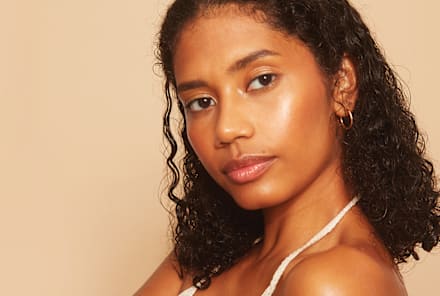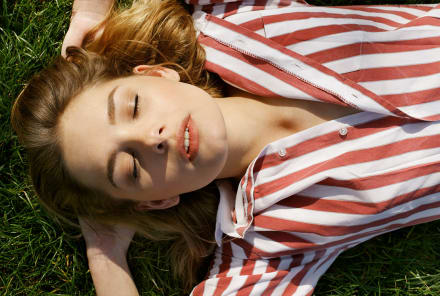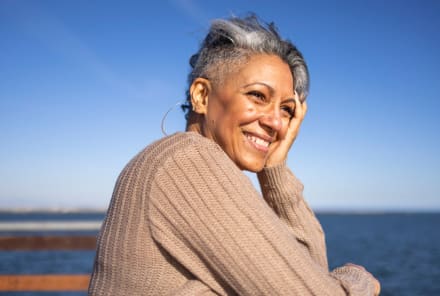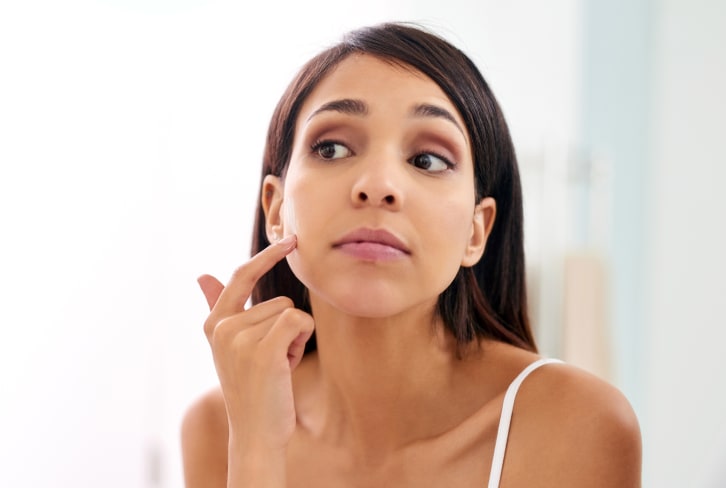Advertisement
I Tried Full-Body Gua Sha & It Changed My Nighttime Routine

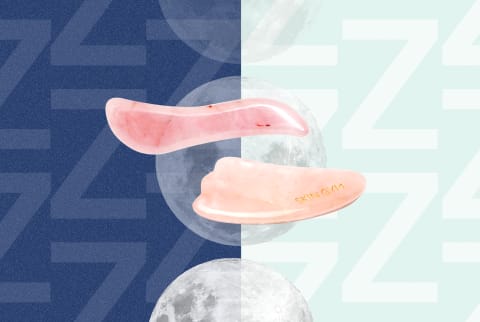
I'm going to make a wager that you've already heard about gua sha. But if you haven't, here's a little briefer: "This is a modality that stems from traditional Chinese medicine," holistic esthetician Britta Plug, minbodygreen's resident facial gua sha expert, tells us. "When you apply gua sha stones to the face, you get that really beautiful pulling and tugging that releases tension in the fascia, muscles, and skin." (Watch her full explanation and tutorial video here.)
Studies, too, show that regular facial massages do help improve skin quality. For example, one study showed1 that daily facial rolling for only five minutes improved blood flow to the face. In another2, patients overwhelmingly reported feeling tighter, more supple skin after regular massages.
Well, now the technique is gaining popularity below the neck. We say "gaining popularity" because just like facial gua sha—or any form of TCM—this is not new. But as people in the West continued to fall for both gua sha and the vast benefits of massage therapy, the overlap of the two was almost inevitable.
"I think it makes sense that facial gua sha caught on first. Everyone is looking for a beauty fix, and it's an easier, less scary thing to try," says Katie Brindle, founder of Hayo'u, a London-based holistic skin care brand. "Now that people understand, trust, and have realized the brilliance of facial gua sha, I'm hoping they will be more open and willing to give body gua sha a try."
I sure was. But first, I did some digging. To start, when you search "full-body gua sha" you're going to see some very intense photos of bruised, red backs. However, I was assured, this was more common when you have a proper practitioner do it you. When you do it on yourself, you may experience some reddening (more on that later), but you're controlling the pressure. "Press-stroking your skin shouldn't be painful," says Brindle. "When in doubt? Stop."
And the purported benefits are an impressively long list: It's said to reduce inflammation, aid sleep, temporarily diminish the appearance of cellulite, and soothe muscles, to name a few. But as is with many ancient traditions and self-care rituals, there's not a ton of research on full-body gua sha. But there is a very good amount of research on the benefits of massage therapy, even when given to yourself, so I'm not necessarily ruling these out.
So I got started. Now, there are many types of gua sha tools out there (just do a quick Google search and countless shapes and stones will materialize). The Now—a natural skin and body care brand, which is based in Los Angeles and provides a plethora of treatments at their spas—just launched their Gua Sha Enhancement in salon with this handy body tool, Nourish By The Now Rose Quartz Gua Sha. It's this long, curved stone that you can use to massage your neck, scoop out your shoulder blades, lift up the muscles on your legs, and so much more. You can also use your more standard variety gua sha tools, like the type that look like swooped triangles, like Skin Gym Rose Quartz Gua Sha Crystal Sculpty Tool. I tried both, both in rose quartz. There's also Hayou's Body Restorer, which is made with medical-grade stainless steel. ("Metal has a more stringent effect on the body, which is not suitable for the delicate skin of the face," notes Brindle.)
And much like the face, you use your stone with an oil: the all-natural Peet Rivko's Body Oil is my go-to, so I used that as well.
Shop These Products:
From there, my nightly treatment goes as follows, as guided by Brindle: After my shower, I slather my chest and neck with oil. Using the curved edge of the tool, I start at the center of my chest and move the blade outward. I do it a total of 16 times, alternating eight on each side. With each stroke, the stone leaves behind a trail of red skin. Brindle assures me this is completely normal: "Press-stroke the skin until redness appears. This rash is called 'petechiae' and looks like bruising, but it's temporary and fades very quickly."
After, I move to my neck. Let's get rid of this tech neck, I think to myself. As a kid I had impeccable posture. Not only was I enrolled in ballet, but my parents always stressed the importance of sitting up straight. And as I've become more attached to my phone and computer, that posture has just deteriorated—and I can feel the aching effects. Starting at my hairline behind my ear, I drag the tool downward until I reach my shoulder. I repeat this eight times, moving the starting position toward my nape with each stroke. I do the same for the other side. This is where I really dig in pressure: I can tell the area needs it.
"After a long day spent on your computer or cellphone, treating your body to a soothing muscle rub with gua sha can dissolve away hours of pain and tension," says Gara Post, co-founder and chief creative officer of The Now.
After a long day spent on your computer or cellphone, treating your body to a soothing muscle rub with gua sha can dissolve away hours of pain and tension.
After, I apply some oil to my lower back and legs, now shifting toward my lower half. I start at the small of my back, applying light pressure with the curved edge sloping down and out toward my hips. Much like the chest, I do this eight times on each side, alternating between. And finally, I target my legs. Here, you pull up, rather than pushing down like the other areas of the body. Starting at my ankles, I moved the stone upward stopping at my knee; with each new pull, I moved the tool around clockwise. After doing each calf, I moved to the thigh and did the same motion, this time starting at my knee and ending at the top of my leg.
The whole process doesn't take long—a few minutes, tops—and after, all I want to do is start the whole thing over again. It. Is. So. Good. You can just feel the stress melt away. (Studies do show3 that massage can decrease our cortisol levels, so I don't think I was imagining that.) While at work, my shoulders relax more, so I'm not as regularly hunched over my computer. When I'm on the subway, I stand just a little taller, too.
And after a week's worth of practice, my skin was more plump and less dehydrated. That, however, I more attribute to my consistent oil application; before this nightly reminder, I regularly skipped body lotions. That being said, since gua sha can improve circulation, which in turn can help overall skin quality, I shouldn't rule it out—especially if I keep this up long term, which, coincidentally, is just what I plan to do.
Watch Next
Enjoy some of our favorite clips from classes
Enjoy some of our favorite clips from classes
What Is Meditation?
Mindfulness/Spirituality | Light Watkins
Box Breathing
Mindfulness/Spirituality | Gwen Dittmar
What Breathwork Can Address
Mindfulness/Spirituality | Gwen Dittmar
The 8 Limbs of Yoga - What is Asana?
Yoga | Caley Alyssa
Two Standing Postures to Open Up Tight Hips
Yoga | Caley Alyssa
How Plants Can Optimize Athletic Performance
Nutrition | Rich Roll
What to Eat Before a Workout
Nutrition | Rich Roll
How Ayurveda Helps Us Navigate Modern Life
Nutrition | Sahara Rose
Messages About Love & Relationships
Love & Relationships | Esther Perel
Love Languages
Love & Relationships | Esther Perel
